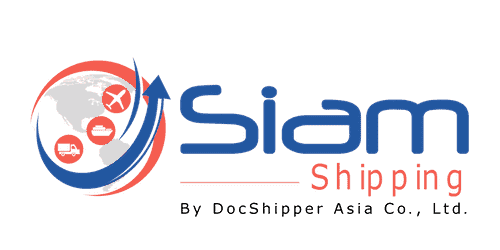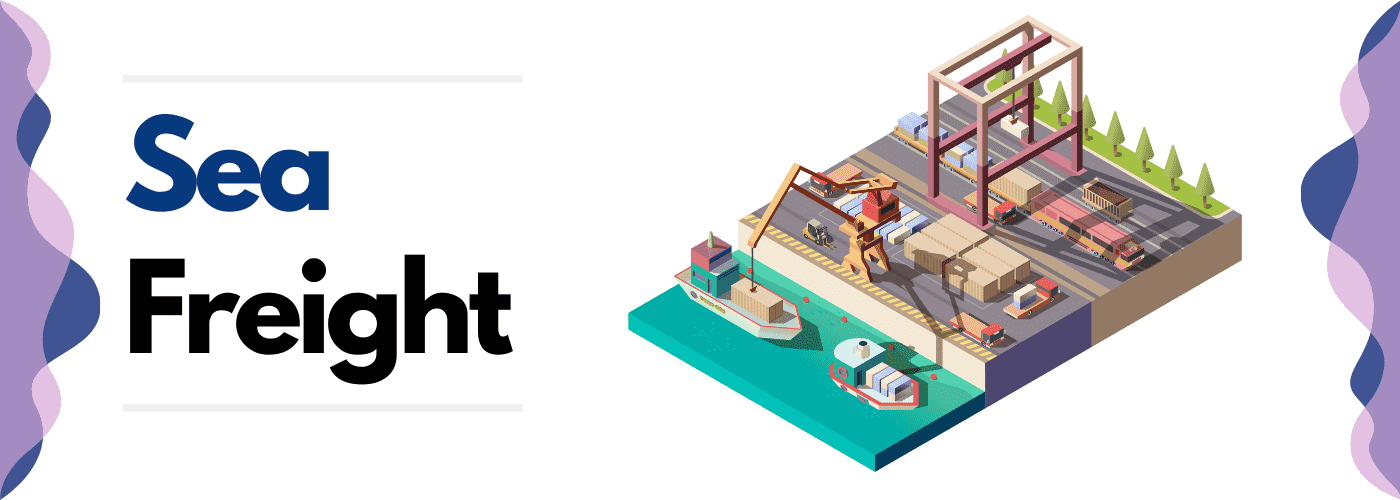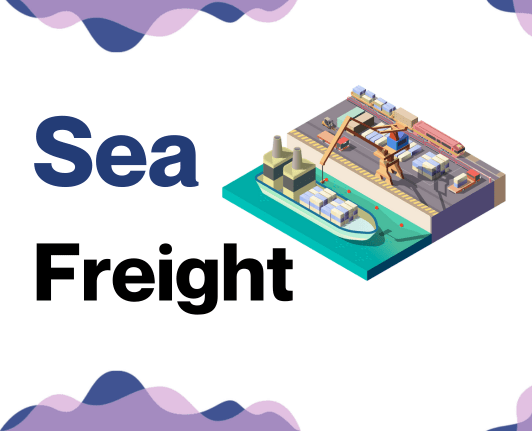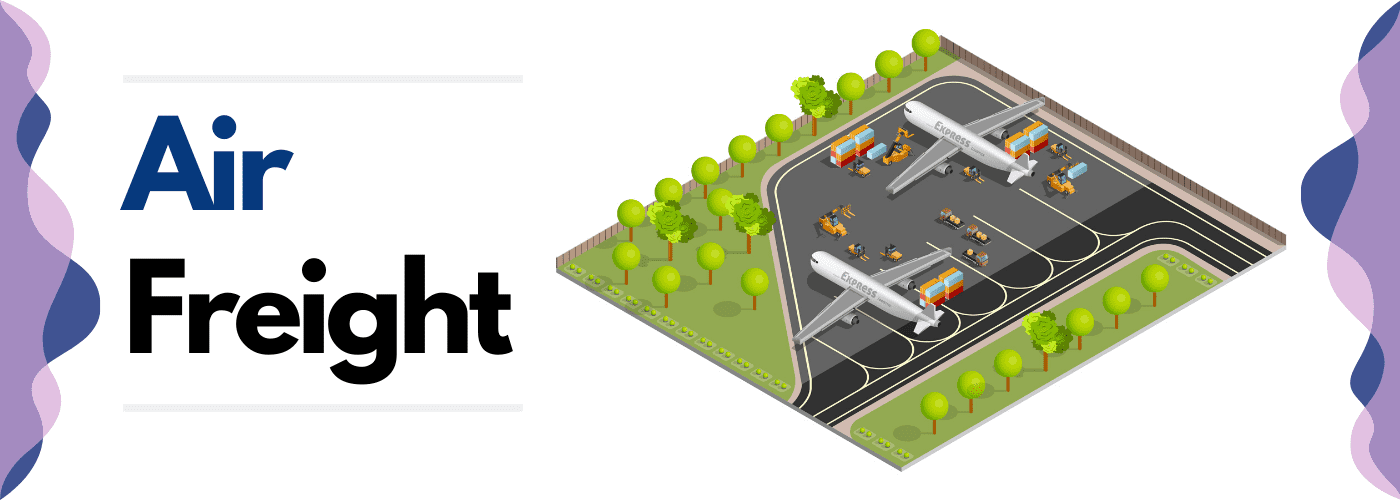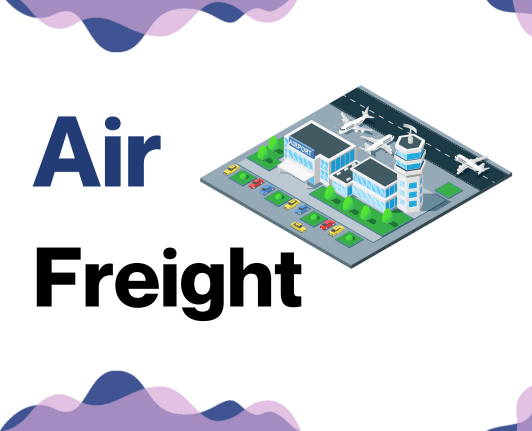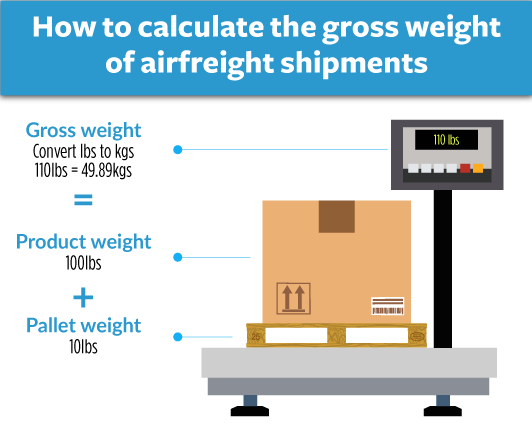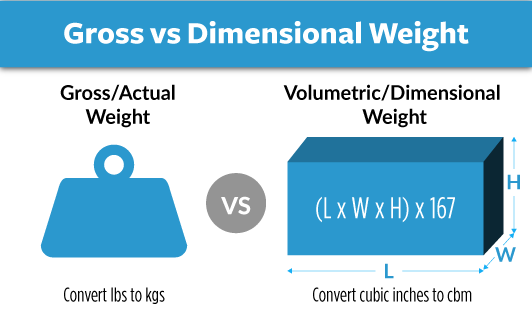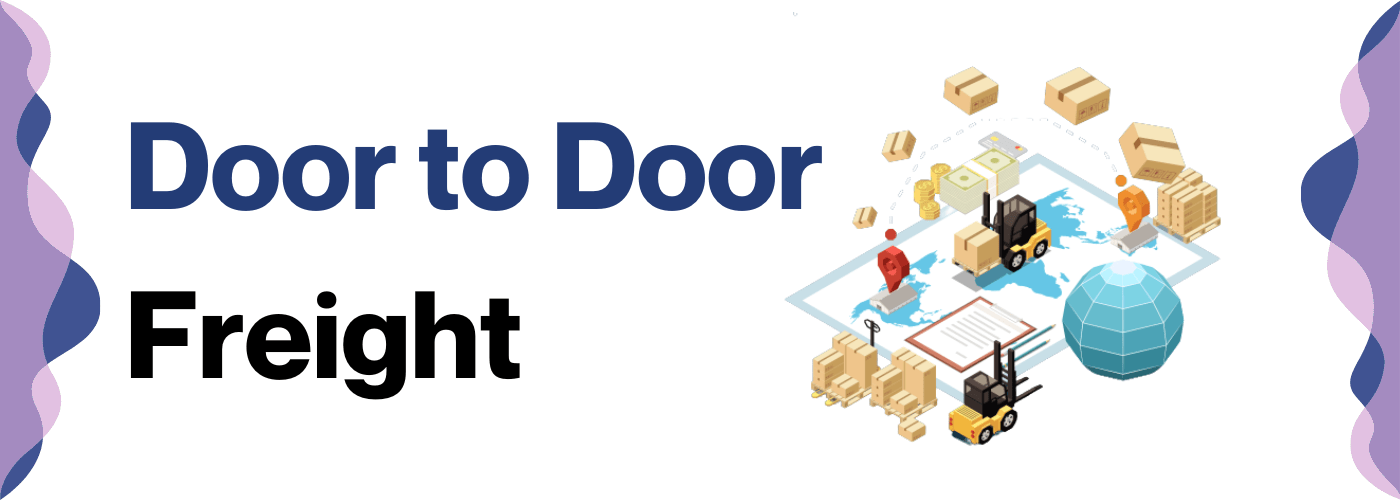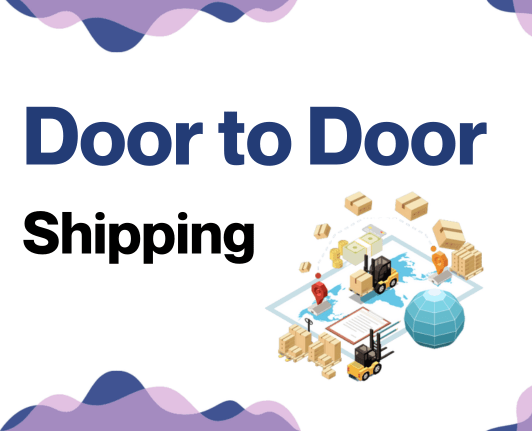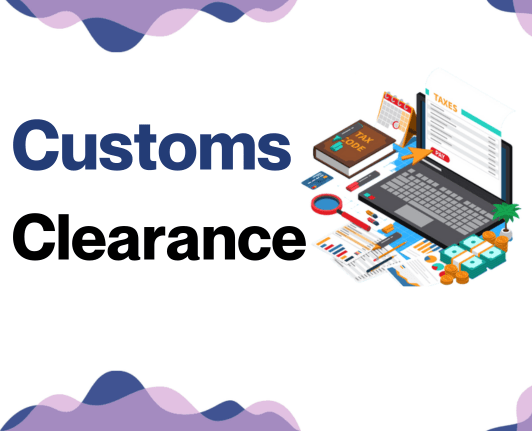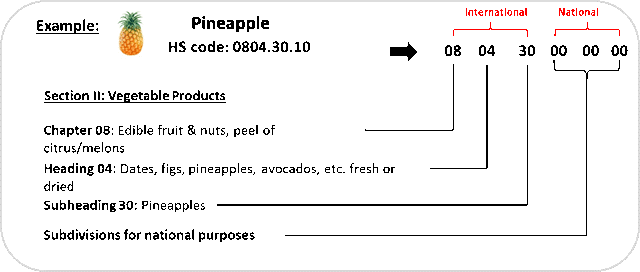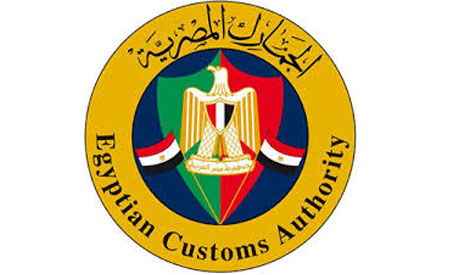Did you hear about the camel who tried to freight its load from Thailand to Egypt? Let us assure you, it wasn't the most efficient way! More often than not, businesses find themselves confronted with the daunting tasks of understanding rates, dissecting transit times, and unraveling complex customs regulations. But fear not, this guide has been curated precisely to address these challenges.
From decoding the different types of shipping options - air, sea, road, or rail, to demystifying the customs clearance maze - we've got it all covered. We dive deep into the labyrinth of duties, taxes, and offer up expert advice tailored exclusively for businesses to thrive in this complex landscape. If the process still feels overwhelming, let DocShipper handle it for you! As your committed international freight forwarder, we take care of every step of the shipping process and turn your challenges into success stories.
Table of Contents
Which are the different modes of transportation between Thailand and Egypt?
Choosing the ideal shipping method from Thailand to Egypt isn't a game of 'eeny, meeny, miny, moe'. It's like planning a trip. You could fly, but it's expensive. A car could work, but the journey's long and jumbled with international borders. The answer often lies somewhere in the middle. Consider similarities to a scenic train ride. Efficient, cost-effective options like sea and air freight balance speed and cost, maneuvering the geographical hurdles of this specific route, making them the top choices to match your shipping needs. Picking the right one is like choosing the best seat for your journey.
How can Siam Shipping help?
Ship goods between Thailand and Egypt stress-free with DocShipper! Our experts handle it all, from transport organization to customs procedures, ensuring a smooth journey for your cargo. Need a quick question answered, or a free estimate in under 24 hours? Reach out to our professional consultants, they're ready to assist you.
Siam Shipping Tip: Consider ocean freight if:
- You are shipping large volumes or bulky items, as sea freight offers the most space at a cost-effective rate.
- You're not racing against the clock. Ocean freight takes its sweet time, especially when stacked up against other transport methods.
- Your supply chain is linked up with big-name ports. Think of it as the VIP lane on the maritime superhighway.
Sea freight between Thailand and Egypt
Embarking on a trading voyage from Thailand's bustling ports to a vibrant marketplace in Egypt? Well, think of ocean freight as your slow yet steadfast camel plodding along a desert route. While the journey isn't swift as air freight, it proves to be cost-effective and reliable enough for your bulk goods – making it choice for several industries.
Understandably, maritime routes may feel like an intricate dance amidst towering waves. Ports like Laem Chabang and Bangkok in Thailand and the pivotal point of Port Said in Egypt serve as the gateway to lucrative markets. Yet, the shipping process between these countries can sometimes make one feel like they're walking through a foggy labyrinth.
Confused about custom clearance procedures? Lost in countless administrative tasks to be done? Fear not! The latter part of this guide will serve as your lighthouse, casting light on critical aspects businesses often overlook and presenting best practices to help your company steer clear of common pitfalls. Simple, actionable steps that brighten your path to successful shipping. So, let's get this journey on the roll and tame these turbulent shipping seas together!
Main shipping ports in Thailand
Laem Chabang Port
Location and Volume: Located east of Bangkok in the Chonburi Province, this port is crucial for facilitating international trade due to its capacity of handling around 18 million TEU. Being the busiest port in Thailand, Laem Chabang is an important gateway to the Greater Mekong region.
Key Trading Partners and Strategic Importance: The port handles the highest traffic from China, followed by the USA and Japan. It's not only vital for Thailand's economy but is also considered one of the top 25 busiest ports globally.
Context for Businesses: If you're looking to tap into the markets of China, USA, or Japan, relying on Laem Chabang could be an essential part of your logistics, given its remarkable shipping capacity and trade-friendly infrastructure.
Bangkok Port
Location and Volume: Located on the left bank of Chao Phraya River, Bangkok Port, also known as Klong Toey Port, is the second busiest port in Thailand with a shipping volume of nearly 8.7 million TEU. It's in close proximity to Bangkok, which is a commercial hub.
Key Trading Partners and Strategic Importance: Primarily, it handles trade with Asian countries, with the main trading partners being China, Singapore, and Japan. It’s crucial for local distribution due to its location.
Context for Businesses: If your logistics strategy revolves around Asian markets or if your business is centered in or near Bangkok, leveraging the Bangkok Port could efficiently streamline your logistics.
Map Ta Phut Port
Location and Volume: Located in Rayong Province, this port is vital for industrial trade, especially for chemicals and petrochemical products, with a shipping volume of 16 million tonnes of cargo excluding oil.
Key Trading Partners and Strategic Importance: Map Ta Phut is an essential partner for shipping chemical goods with Singapore, Japan, and China.
Context for Businesses: If you're in the chemicals or petrochemical industry and aim to expand to Asian markets, Map Ta Phut Port's specialization in handling such goods can be indispensable to your shipping needs.
Songkhla Port
Location and Volume: Located in Songkhla Province, this port handles a volume of 2.7 million tons of cargo, making it a significant player for the Southern region’s economy.
Key Trading Partners and Strategic Importance: Primary trading happens with neighboring SEA countries with the focus on agricultural products, household products, and construction materials.
Context for Businesses: If your goods range within the categories of household items, agrarian products, or construction supplies, Songkhla Port is worth considering due to its specific expertise.
Sattahip Port
Location and Volume: Situated in the Chonburi province, Sattahip Port is a commercial port serving as an additional gateway for Laem Chabang and Bangkok Port.
Key Trading Partners and Strategic Importance: Sattahip majorly supports domestic coastal trade, with Bangkok being its prime trading partner.
Context for Businesses: If you're looking to facilitate intra-Thailand trade, specifically with the commercial center Bangkok, Sattahip Port can play a crucial role in your coastal trade logistics.
Sri Racha Port
Location and Volume: This port is situated in the industrial area of Chonburi province. It handles around 1.3 million TEU, with a primary focus on automobile exports.
Key Trading Partners and Strategic Importance: Its key trade partners are the Autralian countries, China, and Japan with a strategic focus on the automotive industry.
Context for Businesses: If your product line includes vehicles or automobile parts, Sri Racha's specialization in auto exports makes it a strategic choice for your logistic needs.
Main shipping ports in Egypt
Port of Alexandria
Location and Volume: Located on the West Verge of the Nile Delta between the Mediterranean Sea and Mariut Lake in Alexandria, Egypt, this port handles roughly 60% of Egypt's foreign trade with a shipping volume of around 1.5 million TEUs.
Key Trading Partners and Strategic Importance: The Port of Alexandria is a key partner for nations around the Mediterranean and beyond, trading heavily with Greece, Turkey, and Italy. Its strategic importance lies in its proximity to the Suez Canal, being one of the oldest and commercially vibrant ports in the world, and servicing ships from all continents.
Context for Businesses: If you're eyeing the European market, the Port of Alexandria offers a sound launching point thanks to strong existing trade networks and its position as a bustling hub for the region's multilateral trade arrangements.
Port of Damietta
Location and Volume: Situated at the eastern part of the Delta, this port is highly essential for Egypt's economy due to the large volumes it handles, with a capacity of over 1 million TEUs per annum.
Key Trading Partners and Strategic Importance: Port of Damietta plays a crucial role in the trading relationship between Egypt and other Mediterranean countries, especially Italy. The Port's importance also lies in its characteristic as one of the nearest European seaports to the Suez Canal.
Context for Businesses: If you're focused more on transhipment, or on the growing markets of North Africa and Southern Europe, a shipping strategy via Port Damietta would provide you with significant leverage.
Port Said
Location and Volume: As an indispensable port at the northern entrance of the Suez canal, Port Said handles approximately 40% of the global marine traffic with a shipping volume surpassing 3.8 million TEUs.
Key Trading Partners and Strategic Importance: This port is a chief trading partner for both the EU and the Association of South-East Asian Nations ASEAN, given its prime location at a crossroads of global marine transportation.
Context for Businesses: For businesses aiming to take advantage of the Asia-Europe trading route, Port Said's location at the entrance to the Suez Canal provides an efficient solution that can drastically cut transit times and costs.
Port of Suez
Location and Volume: Strategically located on the southern entrance to the Suez Canal, the Port of Suez holds a high strategic value. It has a volume of approximately 1.5 million TEUs.
Key Trading Partners and Strategic Importance: Significant trading partners include the Gulf states, India, Pakistan and South East Asia. The port's strategic importance is rooted in its proximity to the Suez Canal, positioning it as a prominent global commercial route.
Context for Businesses: If your business seeks to broaden its horizons to the Middle East or South Asia, the Port of Suez, with its efficient proximity to the Suez Canal and extensive trading ties to the region, should certainly be a compelling option.
El Dekheila Port
Location and Volume: Located on the North Western Coast of Egypt, El Dekheila is considered an extension of the Port of Alexandria and handles an annual shipping volume of around 800,000 TEUs.
Key Trading Partners and Strategic Importance: Primarily dealing with the EU, and handling a multitude of commodities, El Dekheila port holds a significant importance for Egypt’s outbound volumes.
Context for Businesses: If you are dealing with a diverse product mix calling for high-capacity handlings, El Dekheila Port’s multifaceted capabilities can be a big advantage in your shipping strategy.
Red Sea Ports
Location and Volume: Three extensive facilities namely Nuweibaa, Hurghada, and Safaga are the key Red Sea Ports. Each of these perform crucial roles in freight and passenger handling, while they collectively contribute to a substantial portion of Egypt’s shipping volume.
Key Trading Partners and Strategic Importance: Jordan and Saudi Arabia are key trading partners due to their proximity and mutual trading agreements. These ports primarily serve as a gateway to the Red Sea and the Indian Ocean.
Context for Businesses: Businesses trading extensively with Jordan, Saudi Arabia and the wider Middle East region or aiming to tap into tourism markets could find aligning with the Red Sea ports highly beneficial.
Please note that website links should be used as a reference for detailed consultation and official queries due to dynamic changes in norms and procedures.
Should I choose FCL or LCL when shipping between Thailand and Egypt?
Deciding between Full Container Load (FCL) and Less than Container Load (LCL), also known as consolidation, could swing the pendulum of success for your sea freight from Thailand to Egypt. It's not just about cost, but delivery time and efficiency, too. Like selecting the right ingredients for a recipe, choosing the best shipping option is crucial. Let's dive into the sea of shipping options to clarify these cornerstones, bolster your logistics strategy, and ensure your cargo sails smoothly from the Land of Smiles to the Cradle of Civilization.
LCL: Less than Container Load
Definition: LCL, or Less than Container Load, pertains to shipments that don't require or aren't large enough to fill a whole container. It's a shipping method where multiple consignments from different businesses share the same container.
When to Use: LCL is a flexible and cost-effective option when you're transporting small volumes of goods. Generally, if your cargo is less than 13-15 Cubic Meters (CBM), LCL shipment may be your best bet.
Example: Consider a small exporter of handicrafts in Thailand aiming to reach new clients in Egypt. Given that the volume of goods is small, say 10 CBM, the exporter can choose LCL freight. Their cargo will be consolidated with other consignments, all sharing container and cost.
Cost implications: As LCL freight is used for smaller, lower volume shipments, you pay only for the space you use in the container, which can be significantly less expensive than booking a whole container. However, it's important to be aware that there might be additional handling charges due to the consolidation and deconsolidation process.
FCL: Full Container Load
Definition: FCL, or Full Container Load, refers to shipping freight that fills an entire container, either a 20 ft or a 40 ft one.
When to Use: Selecting FCL for your shipment between Thailand and Egypt is certainly a smart move when your cargo exceeds 13/14/15 cubic meters. The advantages of FCL shipping are costs factor, especially when you've got high volume cargo, and heightened security because the FCL container remains sealed from origin to destination.
Example: Let's consider you're a furniture manufacturer exporting bulk orders of coffee tables from Thailand to Egypt. Due to the size and volume of your goods, they successfully occupy 16 cubic meters of a 20 ft container. Opting for FCL not only assures the safety of your items but also proves economical in the long run because of the high-volume shipment.
Cost Implications: As for the costs, an FCL shipping quote typically includes the container cost and freight charges which are often standardized per container rather than per volume of goods. Thus, the more goods you ship, the lower your cost per unit, making it an ideal solution for bulk shipments.
Unlock hassle-free shipping
Confused about consolidation or full-container shipping between Thailand and Egypt? Trust DocShipper, your freight forwarding partner aimed at simplifying cargo shipping. Our team of ocean freight experts can guide you to the best choice, considering your budget, shipment size, urgency and destination requirements. Don't let the complexities bog you down! Reach out now for a free, bespoke estimation tailored to your business needs. Let's make shipping easier together!
How long does sea freight take between Thailand and Egypt?
Shipping goods by sea freight between Thailand and Egypt roughly takes an estimated time of 24-31 days. However, remember that transit times are not just about distance, but are also affected by factors such as the specific ports of departure and arrival, the overall weight, and the nature of the goods being shipped. For a more accurate estimate tailored to your specific requirements, it’s always beneficial to reach out to a seasoned freight forwarder like DocShipper.
How much does it cost to ship a container between Thailand and Egypt?
Gauging the precise cost to ship a container from Thailand to Egypt isn't a straight line - it's bit of a dance with variables. While generally, shipping rates per CBM oscillate wildly, offering a definitive price tag is challenging due to factors such as Point of Loading, Point of Destination, the carrier involved, the nature of goods, and inevitable monthly market changes. But, here's the silver lining - our team of shipping specialists is committed to orchestrating your shipping experience seamlessly by offering tailor-made quotes. By dissecting your unique requirements, we're able to generate the best ocean freight rates. Rest assured, your shipping cost isn't an estimate, it's a carefully scaled calculation.
Special transportation services
Out of Gauge (OOG) Container
Definition: An OOG container is designed to accommodate cargo that exceeds standard container dimensions, often referred to as Out of gauge cargo.
Suitable for: Large machinery, industrial equipment, construction materials, and anything oversized or heavy that doesn't fit into a standard container.
Examples: Large turbines, bulldozers, prefabricated houses.
Why it might be the best choice for you: If your goods are too wide, long, or tall for a typical container, going with an OOG container ensures safe and efficient shipping from Thailand to Egypt.
Break Bulk
Definition: Break bulk is a method where goods are loaded individually, or in small groups, rather than in large containers.
Suitable for: Goods that are oversized or don't fit neatly into a container.
Examples: Timber, steel beams, large machinery.
Why it might be the best choice for you: If you're dealing with odd-sized cargo, like long steel beams, using break bulk service offers flexibility and safety for your freight during the shipping process.
Dry Bulk
Definition: Dry bulk involves the transportation of loose cargo load, typically in large quantities, that are loaded directly into a ship's hold and not into containers.
Suitable for: Bulk commodities such as grain, coal, and sand.
Examples: Bulk shipments of rice from Thailand to Egypt.
Why it might be the best choice for you: If you're dealing with large quantities of unpackageable goods such as grains, adopting the dry bulk method is the most economical and efficient mode.
Roll-on/Roll-off (Ro-Ro)
Definition: A type of sea freight where vehicles are driven onto the Ro-Ro vessel and secured inside, hence the term Roll-on/Roll-off.
Suitable for: Wheeled cargo such as cars, trucks, semi-trailer trucks, trailers, and railroad cars.
Examples: Shipping a car fleet from Thailand to Egypt.
Why it might be the best choice for you: If you have wheeled or tracked vehicles, Ro-Ro shipping serves as a convenient and secure shipping solution, allowing your vehicles to be driven on and off the vessel with ease.
Reefer Containers
Definition: Reefer containers are insulated, temperature-controlled containers used for the shipment of temperature-sensitive goods.
Suitable for: Fresh produce, pharmaceuticals, chemicals, and seafood.
Examples: Shipment of Thai seafood or Egyptian pharmaceuticals that require a controlled temperature.
Why it might be the best choice for you: If your goods require specific temperatures to maintain freshness or effectiveness during shipping, Reefer Containers will be your best bet.
Got specific shipping needs? Whether it's OOG, Break Bulk, Dry Bulk, Ro-Ro, or Reefer, DocShipper has you covered! Get in touch with us for a free shipping quote tailored to your needs in less than 24 hours.
Siam Shipping Tip: Consider Air freight if:
- Time's ticking and you can't wait. Air freight is like the express train of shipping; it's the quickest way to get your stuff from A to B.
- You're not shipping a warehouse. If your cargo is under 2 CBM, air freight is a snug fit for your smaller haul.
- Your supply chain ends somewhere off the beaten path. Airports are everywhere, so you can get your goods to those hard-to-reach spots.
Air freight between Thailand and Egypt
Shipping goods between Thailand and Egypt? Here's why air freight gets the thumbs up. It's like a sprinter - fast and reliable - making it perfect for your high-value, smaller shipments. Electronic components, auto parts, or medical supplies - they all get to their destination on time. Now, imagine not worrying about sea pirates or harsh weather. That's the beauty of air freight: it shields you from such unpredictable incidents. But beware of common mistakes shippers make, such as using the wrong weight formula to estimate costs. This and other missteps could transform your air freight experience from a joy ride to a bumpy journey. We're here to ensure you get the most out of your shipment without unnecessary hiccups. Let's dive in!
Air Cargo vs Express Air Freight: How should I ship?
Choosing how to ship your products from Thailand to Egypt? Here's a quick, casual primer: Imagine air cargo as flying economy with your goods stashed in the back of a commercial airline, while express air freight is more like having your products on their own private jet. Let's dive deeper into the pros and cons of both methods to pinpoint the best solution for your business shipping needs.
Should I choose Air Cargo between Thailand and Egypt?
Opting for air cargo between Thailand and Egypt can be a wise choice, especially when budgetary needs align with shipments over 100/150 kg (220/330 lbs). International airlines such as Thai Airways and EgyptAir continuously serve this route, providing consistent reliability. Although costs are generally higher, the trade-off comes with fewer transit days, despite fixed schedules. Check out Thai Airways' and EgyptAir's freight facilities for more details. It's imperative to weigh the cost and time to determine if air cargo fits your specific shipping needs. Remember, a well-planned decision can save both time and money, ensuring a smoother shipping experience.
Should I choose Express Air Freight between Thailand and Egypt?
Express air freight is a specialized service that exclusively uses cargo planes without passengers, and might be your perfect choice for shipping small commodities between Thailand and Egypt. Its main appeal is handling shipments under 1 CBM or weighing less than 100/150 kg, making it a fast, efficient option for lightweight cargo. Global leaders like FedEx, UPS, and DHL offer these superior services, ensuring your cargo reaches its destination securely and promptly. So, if you're seeking swift transportation for smaller shipments, consider express air freight.
Main international airports in Thailand
Suvarnabhumi Airport
Cargo Volume: Suvarnabhumi Airport is the main hub for freight entry into Thailand, handling over 97,700 million metric tons of cargo annually.
Key Trading Partners: Major trading partners include China, Japan, and the United States, making it a pivotal player in international trade.
Strategic Importance: Located just outside of Bangkok, it's strategically placed for swift distribution across the country and offers excellent connectivity to other Southeast Asian nations.
Notable Features: The airport boasts a state-of-the-art cargo village, equipped to handle various types of air cargo including all types of perishables, live animals, and hazardous materials.
For Your Business: If your business regularly ships large volumes or delicate goods, Suvarnabhumi can provide the infrastructure and operational reliability you require for your supply chain.
Don Mueang International Airport
Cargo Volume: As a secondary airport, Don Mueang handles a smaller cargo volume, managing around 35,000 metric tons of cargo per year.
Key Trading Partners: Primarily serves cargo flights to neighboring Asian countries such as China, Vietnam, and Indonesia.
Strategic Importance: It's well-located in the capital city and the airport's modern facilities make it a cost-effective alternative for intra-Asia cargo transportation.
Notable Features: Although smaller than Suvarnabhumi, Don Mueang has dedicated cargo facilities and specializes in handling express cargo and mail.
For Your Business: If you're looking to establish quick trade routes within Asia, Don Mueang can provide a more efficient and cost-effective solution for your logistics needs.
Chiang Mai International Airport
Cargo Volume: Chiang Mai handles over 18,000 metric tons of cargo annually, making it an important cargo hub in the northern part of Thailand.
Key Trading Partners: Key cargo trading partners include China, Malaysia, and Laos, among other neighboring Southeast Asian nations.
Strategic Importance: The airport's location in Northern Thailand makes it a vital link for the transport of goods to and from the region's manufacturing industries.
Notable Features: Chiang Mai International Airport possesses substantial cargo storing and handling capabilities, with particular strengths in dealing with agricultural and perishable goods.
For Your Business: If your shipping needs revolve around time-sensitive or perishable goods, Chiang Mai Airport’s efficient handling services can enhance your distribution network in Northern Thailand and beyond.
Phuket International Airport
Cargo Volume: Phuket International Airport handles over 25,000 metric tons of cargo annually.
Key Trading Partners: Main trading partners consist of Australia, China, and Singapore, underscoring its position in the global airfreight industry.
Strategic Importance: Positioned in Southern Thailand, it's an essential gateway for pharmaceutical, electronics, and tourism-related cargo.
Notable Features: Phuket Airport has a dedicated cargo terminal designed for efficient handling and quality control measures.
For Your Business: For businesses in the pharmaceutical or electronics sector, Phuket’s specialized handling services can ensure that your goods are shipped with the utmost care and efficiency, promptly reaching international markets.
U-Tapao Rayong Pattaya International Airport
Cargo Volume: As a smaller airport, U-Tapao handles around 3,000 metric tons of cargo annually.
Key Trading Partners: The airport serves cargo flights mostly to China and other nearby Asian countries.
Strategic Importance: Its location in the Eastern Economic Corridor makes it a strategic point for the shipping of goods to this burgeoning economic region.
Notable Features: Despite being smaller, U-Tapao is rapidly expanding and modernizing its cargo facilities to become a more assertive player in Thailand's freight industry.
For Your Business: If your business is oriented towards the growing markets in the Eastern Economic Corridor, U-Tapao provides an innovative, emerging hub that could offer novel opportunities for faster and more comprehensive logistics solutions.
Main international airports in Egypt
Cairo International Airport
Cargo Volume: Handles over 400,000 tonnes of cargo annually.
Key Trading Partners: Major trading partners include China, USA, and countries in the European Union.
Strategic Importance: As the second largest airport in Africa, it serves as a key hub for cargo traffic for businesses targeting African and Middle Eastern markets.
Notable Features: Features two main terminals and three runways, along with extensive cargo handling facilities.
For Your Business: Its size and location are beneficial for businesses with goods destined for or coming from North Africa and the Middle East. With specialized cargo handling facilities, expedient delivery times can be expected.
Alexandria Borg El Arab Airport
Cargo Volume: Handles approximately 50,000 tonnes of freight annually.
Key Trading Partners: Busy links with European countries, Saudi Arabia, and China.
Strategic Importance: Positioned on the Mediterranean sea, this airport is a vital connection for cargo transport to and from Europe and the Middle East.
Notable Features: Contains one terminal and a runway that accommodates heavy cargo aircraft.
For Your Business: The proximity of Alexandria to important shipping routes on the Mediterranean can be advantageous for businesses transiting goods between Europe, the Middle East, and Africa.
Sharm El Sheikh International Airport
Cargo Volume: Annually handles more than 30,000 tonnes of cargo.
Key Trading Partners: Key trade routes with Europe, especially the UK, Italy, and Germany. Also has strong links with the Middle East.
Strategic Importance: As Egypt's third busiest airport, this provides an important connection to major European and Middle Eastern markets.
Notable Features: Two terminals and modern cargo handling facilities.
For Your Business: Ideal for businesses involved predominantly in trade with Europe, providing access to modern infrastructure and more direct routes to key markets.
Hurghada International Airport
Cargo Volume: Contemporary statistics are not readily available, but the airport is equipped to handle substantial cargo loads.
Key Trading Partners: Strong routes predominantly with Germany, Poland, and the UK.
Strategic Importance: As a growing logistics hub on the Red Sea, it supports cargo transit to and from Europe and Asia.
Notable Features: Upgraded facilities and a runway able to accommodate even the largest cargo planes.
For Your Business: If your goods are being shipped to or from Red Sea countries, Hurghada International is a valuable infrastructure point in your logistics chain.
Luxor International Airport
Cargo Volume: Handles a lower volume of cargo, but is equipped to handle substantial loads.
Key Trading Partners: Predominantly involved in trade with the UK, Netherlands, and Germany.
Strategic Importance: Not a primary cargo hub but provides useful transportation links to European markets.
Notable Features: While it is more passenger-focused, the airport has a runway that can accommodate large cargo aircraft.
For Your Business: Useful for businesses that may need to ship smaller volumes of high-value goods to Europe, taking advantage of its closer links to key European markets.
How long does air freight take between Thailand and Egypt?
Shipping between Thailand and Egypt typically takes between 3-5 days when using air freight. However, it's important to understand that this is just a general estimate. Actual transit time can vary depending on various factors such as the specific airports, the weight of your cargo, and the nature of the goods you're transporting. To ensure accurate shipping times for your particular requirements, it's highly recommended to consult with a reliable freight forwarder like DocShipper.
How much does it cost to ship a parcel between Thailand and Egypt with air freight?
Estimating an air freight parcel's cost from Thailand to Egypt could range widely from $3 to $8 per kg. These rates vary substantially owing to factors such as the distance between the airports, parcel dimensions, weight, and the type of goods being shipped. Given these variables, providing a standard fee isn't feasible. However, rest assured, our team is committed to giving you the best rates possible. We provide quotes on a case-by-case basis to meet your unique needs perfectly. Connect with us and receive a free quote within 24 hours.
What is the difference between volumetric and gross weight?
Gross weight is the actual weight of both your shipment and its packaging. It's measured in kilograms (kg). On the other hand, volumetric weight, often called dimensional weight, isn't about mass. Instead, it's a calculation that reflects the density of a package. It's how much space a package occupies in relation to its actual weight.
You calculate gross weight simply by placing your packed shipment on a scale and noting down the results. For the volumetric weight, a bit more math is involved. In air cargo shipping, the calculation goes like this: Length (cm) x Width (cm) x Height (cm) / 6000 = Volumetric Weight (kg).
Suppose you're shipping a box from Thailand to Egypt that measures 50cm x 60cm x 40cm and weighs 30kg. The gross weight is simply 30kg (or about 66lbs). For the volumetric weight, you'd calculate: 50 x 60 x 40 / 6000 = 20kg (about 44lbs in conversion).
Express Air Freight has a slightly different calculation because of the space these rapid deliveries take up in aircraft. For Express Air Freight, the applied formula is: Length (cm) x Width (cm) x Height (cm) / 5000 = Volumetric Weight (kg).
Using the same package dimensions as above, the volumetric weight by Express Air Freight rules becomes: 50 x 60 x 40 / 5000 = 24kg (around 53lbs in conversion).
Whether you're shipping air cargo or using express air services, freight charges are calculated based on the greater value between the actual physical weight and the volumetric weight. That's because space is just as valuable as weight in the world of shipping.
Siam Shipping Tip: Consider Door to Door if:
- You value convenience and want a seamless shipping process, as door-to-door takes care of every step from pickup to delivery.
- You appreciate having a single point of contact, as door-to-door services typically provide a dedicated agent to handle all aspects of the shipment.
- You want less transitions for your cargo, reducing the risk of damage or loss, as door-to-door minimizes transitions between different modes of transport.
Door to door between Thailand and Egypt
Introducing Door-to-Door shipping - a seamless international delivery method that takes your goods from Thailand straight to Egypt, handling all the logistics in-between. This comprehensive service saves you time and stress with no need for coordinating multiple carriers. Embrace the simplicity, reliability, and convenience of this wonderful service. Grab your dive gear, let's dive deep to explore more about door-to-door shipping!
Why should I use a Door to Door service between Thailand and Egypt?
Ever wondered how pharaohs would have fared shipping papyrus scrolls from Thailand to Egypt? Luckily, modern logistics offers a simpler solution: Door to Door delivery. Here's why this service might just be your saving grace.
1. Goodbye Stress: Let's face it, handling all the transportation and customs clearance on your own is like juggling flaming torches. Door to Door service takes away the stress, handling everything from goods pickup at your source in Thailand to delivery in Egypt. No more sleepless nights wrestling with transit schedules!
2. Speedy Deliveries: Racing against time? Door to Door services excel at being fast and efficient, ensuring shipments reach their destination before your deadline looms. Perfect for shipping those urgent products.
3. Special Care For Complex Cargo: If you're shipping fascinating but oh-so-frustratingly intricate items, breathe easy. Door to Door services provide specialized handling for complex cargo, ensuring it stays in prime condition from pickup to delivery.
4. Handle Everything: Save your sweat and tears for business growth, not shipping procedures. Door to Door services handhold your cargo from customs clearance to the final delivery, freeing you to focus on what you do best.
5. Ultimate Convenience: Would you rather be out closing deals or chasing trucks? With comprehensive trucking included in Door to Door service, trade in your trucker's hat for some well-deserved ease and convenience.
Trust Door to Door service to reconstruct the Sphinx level of supreme shipping for your business, conjuring up a flawless logistics experience. Enjoy the journey from Thailand to Egypt as your goods follow suit.
DocShipper – Door to Door specialist between Thailand and Egypt
Expect seamless, stress-free door-to-door shipping between Thailand and Egypt with DocShipper. Experts in logistics, we manage every step: packing, transport, customs clearance, and lining out all shipping methods. No need to worry, your dedicated Account Executive is at the helm of your shipping process. Reach out for a free quote in less than 24 hours, or tap into the expertise of our consultants at no cost. Shipping becomes easy with DocShipper!
Customs clearance in Egypt for goods imported from Thailand
Customs clearance refers to the procedural steps importers need to navigate in order to legally get their goods into Egypt from Thailand. It's a web of complexities, brimming with potential financial sinkholes like unexpected charges, not to mention delays that could see your items stranded in customs. Here, understanding Egypt's customs duties, taxes, quotas, and licensing regulations is critical to avoid financial headaches and ensure a smooth flow of goods across borders.
Thankfully, wisdom as the antidote to this complexity is at hand. We'll lay out these complex areas in the following sections, easing your freight-forwarding journey every step of the way. Should you need further support, remember DocShipper is equipped to assist you at every level - from emerging inquiries to a detailed estimation based on your goods' origin, value, and HS code. More than logistics, we're your trusted customs companion.
How to calculate duties & taxes when importing from Thailand to Egypt?
Shifting goods across international borders isn't just about jumping on the next flight or pointing your ship towards the horizon; it also involves negotiations with complex tariff grids and intricate tax formulas. Whether it's a heart-shaped glass bottle or a rattan basket, understanding how to compute import duties and taxes from Thailand to Egypt is fundamental to smoothly sailing through custom procedures and avoiding any unwelcome surprises.
The first step in this journey is fairly straightforward: identify the country where the goods were produced or manufactured. This is crucial as it sets the stage for the whole customs process, including the estimation of duties and taxes. This is the key to unlock the door to your successful import-export business. Importing from Thailand to Egypt? Roll up your sleeves and let's dive in!
Step 1 - Identify the Country of Origin
Knowing the country of origin of your goods is the first crucial step to estimate duties and taxes. Here's why:
1. It determines the applicability of trade agreements.
2. Regulatory bodies use it to assess controls and prohibitions.
3. The customs value of goods often depends on their country of origin.
4. Import restrictions vary based on the country of origin.
5. It impacts the tariff classification of goods.
Thailand and Egypt have a Free Trade Agreement (FTA), reducing or eliminating customs duties. You should examine if your goods qualify under this agreement to enjoy duty savings.
Awareness of import restrictions marks a difference. For example, Egypt has banned imports of specific items like used car tires from Thailand.
To save time and avoid trouble, make sure you understand these restrictions before deciding to import a product.
Remember, understanding the origin of items and how it affects your shipment is not just a step in the process, but a fundamental aspect of importing that can save you from considerable challenges. Know the origin and navigate the journey of your imports with confidence.
Step 2 - Find the HS Code of your product
The Harmonized System Code, often simply referred to as the HS Code, is a crucial aspect of international trade. This standardized numerical method of classifying traded products is recognized and used globally by customs authorities. The primary use of these codes is to regulate the tariffs that apply to goods and to streamline the process of importing and exporting goods.
Generally, an efficient way to ascertain your product's HS Code is by reaching out to your supplier. These suppliers are well-versed in applicable HS Codes because they frequently deal with importing and exporting goods and are well-acquainted with the corresponding regulations.
In the event that consulting your supplier is not possible, do not fret. We have an easy-to-follow process for you to find the HS Code. Begin by visiting this Harmonized Tariff Schedule search tool. Input the name of your product into the search bar, and then check the 'Heading/Subheading' column. This is where you'll find your product’s HS Code.
Please remember that while finding the code is straightforward, ensuring its accuracy is paramount. If you incorrectly identify your product's HS Code, it may result in delays due to customs complications. In some cases, incorrect classification could even lead to fines.
Here's an infographic showing you how to read an HS code. Do invest time to familiarize yourself with it—it will help you understand the process even better. Remember, comprehension of these codes is invaluable in ensuring smooth international business operations.
Step 3 - Calculate the Customs Value
Calculating the customs value might seem daunting, but it's an essential part of shipping your goods from Thailand to Egypt. The value isn't just the price you've paid for the products. In fact, it's the cost-insurance-freight (CIF) value - a sum that includes the price of your goods, the international shipping cost, and the insurance cost.
For example, let's assume your widgets cost $2000, international shipping is $500, and insurance is $100. Your CIF value, then, is $2000 (product cost) + $500 (shipping) + $100 (insurance) = $2600. This CIF value is what Egyptian customs will use to calculate the customs duties you owe. Remember, understanding this step is key to avoiding unexpected importation costs.
Step 4 - Figure out the applicable Import Tariff
An import tariff is essentially a tax imposed by a government on imported goods. It increases the cost of the goods for importers, which they often pass onto customers as higher prices. For Egypt, specifically, there exists a Harmonized System Tariff which is used internationally.
Let's illustrate this with an example. Suppose, you're shipping plastic kitchenware from Thailand to Egypt with an HS code 392410. Here's the process you'll follow:
1. Visit the official website for Egyptian Customs and find their Tariff Search tool.
2. Enter the HS code (392410) and the country of origin (Thailand).
3. The system will display specific duties and taxes applied to your product, let's assume it shows a tariff rate of 10%.
Additionally, apart from the basic tariff, you will also need to pay Cost, Insurance, and Freight (CIF) charges which vary based on different factors. For instance, if your CIF costs were $10,000, your import duty would be $1,000 (10% of $10,000).
Step 5 - Consider other Import Duties and Taxes
While the standard tariff rate is a common cost you might expect when importing goods from Thailand to Egypt, that's not all there is to it. It's critical to be aware of other dues that depend on the origin of your items and their type.
Take, for instance, the excise duty. This is an extra fee charged on goods like tobacco or alcohol. Let's say you transport wine valued at $10,000, and the excise duty is 100%. You'd be looking at an additional $10,000 here - quite significant!
Also note the anti-dumping taxes - regulations to protect Egyptian industries. If you're importing steel from Thailand at $500 per ton, and Egyptian industries sell it at $1000 per ton, you might face an anti-dumping duty to bridge this price difference.
The VAT rate, though, holds prime importance. It's calculated on the value of the goods plus the customs duties. So, if the VAT is 14% and your goods cost $10,000 with a $1,000 duty, you'll owe $1,540 in VAT.
Bear in mind, these are hypothetical examples, actual taxes can differ, but they underscore the necessity for careful calculations. Dealing with additional costs can turn into a slippery slope if not meticulously arranged and planned. Always equip yourself with the knowledge of all potential expenses to avoid unpleasant surprises!
Step 6 - Calculate the Customs Duties
Step 6 helps you understand how to compute customs duties in Egypt for goods imported from Thailand. The basic formula is: Customs Duty + Value Added Tax (VAT) + Anti-Dumping Taxes = Total Customs Duty.
Let's examine this through three examples, using each element of the formula.
1. For a shipment valued at $5000 with a customs duty rate of 5%, your customs duty is $250 (5% of $5000). There's no VAT in this case, so you owe $250.
2. Now, let's add a VAT rate of 15%. For a $6000 shipment with a 10% customs duty rate, you pay $600 in customs duties. Then, the VAT is computed on the goods value plus the customs duty ($6600), thereby amounting to $990 ($6600 15%).
3. Let's go all-in with a $7000 shipment. Assuming customs duty at 10% ($700), VAT at 15% ($1125 computed on $7700), anti-dumping taxes at 5% ($385 computed on $7700), and Excise Duty of 20% ($1540 on $7700), the total works out to $3750.
Remember, miscalculations can lead to overpaying. Engage DocShipper! We ensure smooth, cost-efficient customs clearance worldwide. Contact us for a free quote in under 24 hours and never worry about overpaying again!
Does DocShipper charge customs fees?
As a custom broker in Thailand and Egypt, DocShipper doesn't charge customs duties but customs clearance fees. Think of it this way: you go out for dinner; the restaurant charges you for the meal (akin to the customs clearance fees by us) but you are also responsible for the taxes on that meal (the customs duties), which go directly to the government. We'll provide documents from the customs office to confirm you're only paying what they charge, ensuring full transparency. This way, you're always in the loop with no unexpected surprises!
Contact Details for Customs Authorities
Thailand Customs
Official name: Customs Department, Kingdom of Thailand
Official website: www.customs.go.th/
Required documents for customs clearance
Drowning in paperwork and unfamiliar jargon while arranging international shipments? Let's tame that storm. We'll break down the meaning, importance, and usage of the Bill of Lading, Packing List, Certificate of Origin, and Documents of Conformity (CE Standard)—your key tools for seamless customs clearance. Conquer your logistics challenges with our clear, easy-to-understand guide.
Bill of Lading
Navigating the maze of international shipping? Your secret weapon is the Bill of Lading - an indispensable document marking the change of ownership from seller to buyer. Whether you're sending spices from Samut Prakan or importing goods via the bustling Port of Alexandria, this paper trail is vital in the Thailand-Egypt trade lane. Improved services have paved the way for electronic (or 'telex') release, speeding up the process and minimizing hang-ups at customs. When it comes to air cargo, there's the Air Waybill (AWB), an equivalent to the Bill of Lading. Remember, a well-prepared Bill of Lading can mean the difference between smooth sailing and bumpy waters in your supply chain journey. Happy shipping!
Packing List
The Packing List is your shipping lifeline between Thailand and Egypt, crucial irrespective of whether you choose sea or air freight. Imagine this as your shipment's inventory that details what's inside your shipment. Packing List mistakes could lead to customs delays or even cargo rejection. Let's say your shipment contains 1000 ceramic vases but this isn't accurately reflected on your Packing List.
A customs officer in either Bangkok or Alexandria discovers a discrepancy and this could stall your shipment, disrupting your supply chain. As a shipper, you wear the cap of accuracy here. It's imperative to ensure every item in your shipment, be it large machinery or silk shirts, finds an accurate mention on your Packing List. A comprehensive, accurate Packing List is instrumental in breezing through customs, avoiding unnecessary hassles or delays. Happy and accurate shipping!
Commercial Invoice
Spending your busy days shipping goods from Thailand to Egypt? Then the Commercial Invoice should be your best friend. This slip isn't just a rundown of what you're shipping, but your ticket to a smooth customs clearance. Make sure it includes your business details, information about your Egyptian client, the Harmonized System (HS) code, item description, and the value of the goods. Let's say you're shipping silk fabrics—these details, when properly itemized, will help the Egyptian customs swiftly determine the appropriate duties. It's also a golden rule to keep this document consistent with your packing list and Bill of Lading. It's like syncing your devices, only this time, it's your import-export documents. Remember, a good Commercial Invoice avoids hitches and fast-tracks your shipping journey.
Certificate of Origin
Getting goods from Thailand to Egypt involves paperwork, and one critical document is the Certificate of Origin. This isn't just bureaucracy; it can play a key role in how much you pay in customs duties. The Certificate of Origin verifies the country where your goods were manufactured, a factor that can determine preferential duty rates, potentially reducing what you owe. Had you shipped Buddha statues produced in Thailand and presented your Certificate of Origin, you'd benefit from lower tariffs under today's Egypt-Thailand trade agreements. Keep in mind, though — a Certificate of Origin needs to clearly mention the manufacturing country. You'd be surprised how often this simple detail gets overlooked, leading to unnecessary delays and hassles.
Get Started with Siam Shipping
Overwhelmed by the complexities of customs clearance between Thailand and Egypt? Tight deadlines and no room for error? That's where we shine! At DocShipper, our expert team ensures a smooth, hassle-free clearance process. Invest your time where it matters most, and leave the red tape to us. Start warming up to stress-free shipping – get a free quote from us in less than 24 hours!
Prohibited and Restricted items when importing into Egypt
Unsure of what goods might land you in hot water when shipping to Egypt? Dodging the snags and mishaps linked to prohibited and restricted items becomes pivotal. By getting informed, you can dodge fines, delayed shipments, or seized items. Let's get into the tricky terrain of Egyptian imports.
Restricted Products
- Agricultural products: You have to apply for import permits from the Egyptian Ministry of Agriculture and Land Reclamation.
- Pharmaceuticals: You'll need a certificate or a permit from Egypt's Ministry of Health and Population.
- Precious metals and stones: A special permit is needed from Egypt's Ministry of Petroleum and Mineral Resources.
- Communication tools and equipment: Clear this with the National Telecom Regulatory Authority.
- Goods with military or dual-use application: Obtain a license from Egypt's Ministry of Military Production.
- Firearms and ammunition: You have to apply for an import license from Egypt's Minister of Interior Affairs.
- Certain food items: Have this permitted by the Egyptian Organization for Standardization and Quality.
Remember, always ensure you have the correct permits before attempting to ship these types of goods to avoid any potential problems with customs.
Prohibited products
- Any publications, drawings, photographs, films, etc., involving an affront to religion or defaming the country's reputation.
- Narcotic drugs of all types and shapes.
- Radioactive and nuclear substances.
- Asbestos or patient's ash of such items.
- Pesticides and insecticides banned internationally.
- Livestock or poultry affected by contagious diseases.
- Spoiled and rotten foodstuffs.
- Used, reconditioned, and scraped tires.
- Waste, industrial waste, and polluted substances.
- Goods of Israeli origin or those imported from Israel.
- Automatic and semi-automatic shotguns.
- Insects, pests, and weed seeds.
- Some pharmaceutical substances such as narcotics, growth hormones, and antibiotics that have an impact on the human being, animal, plant, or environment.
- Endangered animals and plants, and products derived from them, prohibited by the Convention on International Trade in Endangered Species of Wild Fauna and Flora (CITES).
- Tunas, their meat, offal, and products thereof.
- State flags, emblems, seals, and minted coins.
- Wireless transmitters and receiver sets, prohibited or unknown by competent authority in Egypt.
- Goods that infringe intellectual property rights or trademarks.
- Cryptocurrency systems equipment.
- Used and refurbished equipment, including air conditioning and safety equipment.
- Counterfeit and fake goods.
Are there any trade agreements between Thailand and Egypt
Certainly, understanding trade agreements significantly impacts your shipping plans. As of now, there isn't a specific Free Trade Agreement (FTA) or Economic Partnership Agreement (EPA) between Thailand and Egypt. However, both countries are part of the Greater Arab Free Trade Area (GAFTA) and the Association of Southeast Asian Nations (ASEAN). This association could potentially reduce your customs duties. Furthermore, ongoing initiatives aim to strengthen bilateral trade, signaling future opportunities. Thus, keep abreast of these discussions to potentially benefit your business even further.
Thailand - Egypt trade and economic relationship
Thailand and Egypt have enjoyed a thriving bilateral relationship spanning several decades, characterized by robust economic ties and mutual investments. Key players include sectors like textiles, agro-processed goods, and auto parts. Historical milestones include the 1998 establishment of the Thai Trade Center in Cairo to boost commercial engagement.
Significant trade volume is seen in rubber and rice from Thailand and chemicals and cotton from Egypt, emphasizing the countries' complementary economies. In 2022 alone, bilateral trade reached $625M, displaying continual growth. Thailand's key investments in Egypt center around manufacturing, accounting for a robust $56M by 2023. Nonetheless, with Egypt’s strategic locale and Thailand's dynamic economy, there’s foreseeable potential for wider investment and more diversified trade.
Your Next Step with Siam Shipping
Overwhelmed with the complexities of shipping between Thailand and Egypt? Let DocShipper ease your burden. Our seasoned professionals handle everything - from transport organization to customs clearance. With us at the helm, you can focus on growth while we streamline your logistics. Contact us today to simplify your shipping experience!
Additional logistics services
Explore more with DocShipper! We don't stop at shipping and customs clearance; let's handle your entire supply chain for a seamless, hassle-free logistics experience. You focus on growth, we handle the rest.
Warehousing and storage
Secure, reliable warehousing in Thailand and Egypt can be tricky to nail down, more so when your goods need specific conditions like temperature control. Don't let this storage challenge hinder your business. Uncover the benefits of our dedicated resources equipped for different needs. Check out how we handle this on our Warehousing page.
Packaging and repackaging
When shipping goods between Thailand and Egypt, the importance of correct packaging and repackaging cannot be overstated. A reliable agent ensures your porcelain figurines or textile bundles are packed to withstand jostling journeys; secure yet cost-effective. Be it ceramics or cloth, proper packaging pays off in spades. More info on our dedicated page: Freight packaging.
Cargo insurance
Cargo insurance plays a crucial role in mitigating risks during transport, unlike fire insurance which covers a distinct event. Think of it as a safety-net for your valuable shipment, ensuring that unforeseen incidents don't blow your budgets. Picture a storm at sea damaging your goods, or a road accident en route to Cairo - without insurance, you're shouldering those costs alone. But our tailored cargo insurance buffers potential monetary loss, providing peace of mind. More info on our dedicated page: Cargo Insurance.
Supplier Management (Sourcing)
Breaking into the Asian or East European market can be daunting. Luckily, DocShipper simplifies it, offering turnkey solutions for sourcing and manufacturing in these regions. No more language barriers or complex procurement processes. Imagine finding the perfect Thai silk or Egyptian cotton supplier effortlessly! Explore more on these streamlined processes by heading to our Sourcing Services.
Personal effects shipping
Shipping grandma's precious china or your bulky home gym from Thailand to Egypt? Our personal effects shipping service ensures every item, however delicate or spacious, is handled with utmost care and flexibility. With real-world scenarios (like successfully transporting a vintage car), we've got your back. More info on our dedicated page: Shipping Personal Belongings.
Quality Control
When shipping from Thailand to Egypt, strict quality inspection is vital to prevent pricey do-overs or rejections at customs. Remember that one bad batch could cost you not just financially, but also in lost business trust. For instance, an apparel exporter saved thousands just by ensuring that the textiles met Egypt’s quality standards before shipping. The earlier errors are noticed, the less it costs. For in-depth insights, check our Quality Inspection page.
Product compliance services
Understanding product compliance is crucial in cross-border shipping. Our Product Compliance Services ensure your goods adhere to destination regulations through thorough laboratory tests and certification. For instance, a toy manufacturer might need to comply with stringent safety standards for children's products. This eliminates any worry of regulatory infringement. For comprehensive details, visit our dedicated page: Product Compliance Services.
FAQ | Freight Shipping between Thailand and Egypt | Rates - Transit times - Duties and Taxes
What is the necessary paperwork during shipping between Thailand and Egypt?
When shipping from Thailand to Egypt, the paperwork required includes a bill of lading for sea freight or an air waybill for air freight. We at DocShipper will manage these for you. What's essential from your end is to offer us the packing list and the commercial invoice. Some shipments might mandate additional documents depending on the nature of the goods, such as Material Safety Data Sheets (MSDS) or specific certifications. Rest assured, we'll guide you through every step of the process to ensure you meet all necessary requirements.
Do I need a customs broker while importing in Egypt?
Yes, we at DocShipper strongly recommend utilizing a customs broker when importing goods into Egypt. This advice stems from the complexity of interacting with customs authorities, which typically involves a series of detailed processes and mandatory document provision. We're committed to ensuring efficient cargo handling, and as such, we stand as your representation during customs clearance in most shipments. With our professional guidance, navigating the inherent complexities becomes much simpler and your shipments stand a better chance at a smooth transition through customs.
Can air freight be cheaper than sea freight between Thailand and Egypt?
While it's tricky to offer a broad response, several factors like route, weight, and volume influence whether air freight would be cheaper than sea freight from Thailand to Egypt. Primarily, if your cargo is less than 1.5 cubic meters or under 300 kg (660 lbs), air freight becomes a viable option. Here at DocShipper, we're committed to delivering the best value. Our dedicated account executives analyze your specific needs and conditions to provide the most competitive shipping method. Rest assured, our top priority is offering you effective and affordable solutions.
Do I need to pay insurance while importing my goods to Egypt?
While importing goods to Egypt, insurance is not a mandatory requirement. However, we at DocShipper highly recommend that you choose to insure your goods. This recommendation stems from the simple fact that unpredictable incidents can occur during the shipping process. Such incidents, including but not limited to damage, loss, or theft, could lead to unforeseen costs and disruptions in your operations. Insurance provides an essential safeguard against such events, giving you peace of mind knowing that you're protected.
What is the cheapest way to ship to Egypt from Thailand?
The most economical way to ship goods from Thailand to Egypt generally tends to be sea freight, notably in container ships. This is because the maritime route allows for large loads at comparatively lower costs than air freight. However, this method is slower, so if you're shipping perishable items, or if speed is paramount, airfreight might be worth the additional cost. Always remember, the best shipping method depends on the size, weight, and nature of your cargo as well as your budget and delivery deadline.
EXW, FOB, or CIF?
Choosing between EXW, FOB, or CIF depends on your relationship with your supplier. It's important to remember that your supplier is not a logistics professional, and a specialised agent like us at DocShipper can manage the international freight process and procedures at the destination. Most suppliers sell under EXW (from the factory door) or FOB (including all local charges until the origin terminal). Regardless of the terms, we can provide a comprehensive door-to-door service tailored to your needs, for seamless shipping experience.
Goods have arrived at my port in Egypt, how do I get them delivered to the final destination?
If we manage your cargo under CIF/CFR incoterms at a port or airport in Egypt, you'll need a customs broker or a freight forwarder to clear the goods, handle import charges, and oversee delivery. Alternatively, you can employ our team under a DAP incoterm, meaning we handle the entire process for you. To clarify these details, please discuss with your dedicated DocShipper account executive.
Does your quotation include all cost?
Absolutely, our quotation provides a comprehensive cost breakdown, so you can be assured there are no hidden fees. The only exclusions are duties and taxes at the destination, as these can vary. If you're uncertain, your dedicated account executive at DocShipper can help estimate these for you. We believe in transparency and want to ensure you have no unexpected surprises.
